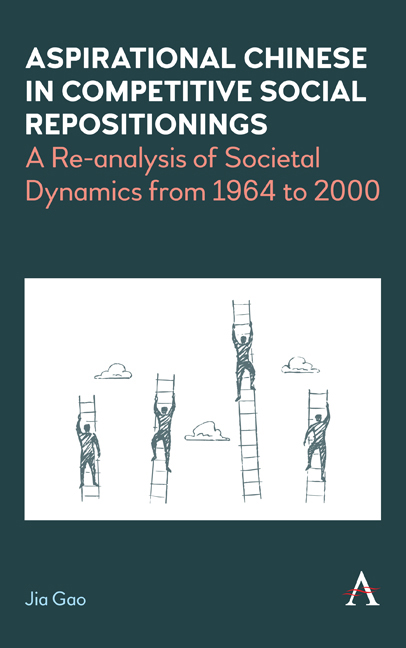 Aspirational Chinese in Competitive Social Repositionings
Aspirational Chinese in Competitive Social Repositionings Book contents
- Frontmatter
- Contents
- List of Abbreviations
- List of Figures
- List of Tables
- Preface and Acknowledgements
- One The Absence of Everyday Chinese in the Dichotomous Paradigm
- Two Rebranding the Communist Heir Narrative and the Cultural Revolution
- Three Tearing the Utopian Veil Down By the Sent-Down Youth
- Four Crying Out for Changes in the Second Half of the 1970s
- Five Battling for the Advantages Under the Dengist Political Alliances
- Six Climbing Different Social Ladders From the Mid-1980s
- Seven Filling in the Post-1989 Vacuum Left By Educated Liberals
- Eight Seizing Chances to Be Entrepreneurial in Post-1992 China
- Nine Towards a Theory of Competitive Social Repositioning
- References
- Index
Two - Rebranding the Communist Heir Narrative and the Cultural Revolution
Published online by Cambridge University Press: 28 February 2024
- Frontmatter
- Contents
- List of Abbreviations
- List of Figures
- List of Tables
- Preface and Acknowledgements
- One The Absence of Everyday Chinese in the Dichotomous Paradigm
- Two Rebranding the Communist Heir Narrative and the Cultural Revolution
- Three Tearing the Utopian Veil Down By the Sent-Down Youth
- Four Crying Out for Changes in the Second Half of the 1970s
- Five Battling for the Advantages Under the Dengist Political Alliances
- Six Climbing Different Social Ladders From the Mid-1980s
- Seven Filling in the Post-1989 Vacuum Left By Educated Liberals
- Eight Seizing Chances to Be Entrepreneurial in Post-1992 China
- Nine Towards a Theory of Competitive Social Repositioning
- References
- Index
Summary
One of many sets of confusing, illogical and self-contradictory discourses in contemporary China is that, although in the post-Mao period there had been some efforts to change, the ruling party has almost always defined itself as a revolutionary party (Dickson 1997; Zhao 2006). The insistence on defining itself as a revolutionary party may serve the CCP's political need for reminding everyone that they established the PRC – the new state power – at the cost of the lives of millions of its supporters, and that they own the state power. This political understanding in Chinese is called da tianxia, zuo tianxia or da jiangshan, zuo jiangshan (those who fought to win the state power rule the country) (Watson 1992; Huang 2000). It is historically true that this thinking has been part of the traditional Chinese political logic regarding the dynastic changes over a couple of thousand years. However, the new leaders, if not rulers, have failed to understand that there are hardly any intelligent rulers of past dynasties who would back and advocate a rebellious spirit and discourse after seizing the ruling state power. For several generations after the late Qing Dynasty (1644–1911), Chinese left-wing intellectual and political elites have acted differently, paying excessive attention to revolutionary ideas, including imported Marxism. They have hardly pondered upon why the rulers of the Han Dynasty (206 BCE–220 CE), a far more successful state system than almost all the other later nation-states, decided as early as in 136 BCE to relinquish all other schools of thought but maintain and venerate Confucianism only (Yao 2003). The latter had been endorsed by all later Chinese dynasties to generate and uphold a non-rebellious socio-political order after dynastic changes.
What was worse in the case of China in the 1960s was that the whole society was not only confused by the numerous new sets of revolutionary discourse but also devastatingly troubled by its post-revolution internal fight. As noted in Chapter one, the internal fight within the CCP erupted in 1959, which was followed by the nationwide famine from 1959 to 1961. This was a disastrous start of the second decade of the PRC's rule, which was very different from the 1950s and its socio-political order introduced after 1949, following the nationwide armed revolution of a few decades.
- Type
- Chapter
- Information
- Aspirational Chinese in Competitive Social RepositioningsA Re-Analysis of Societal Dynamics from 1964 to 2000, pp. 27 - 48Publisher: Anthem PressPrint publication year: 2023


